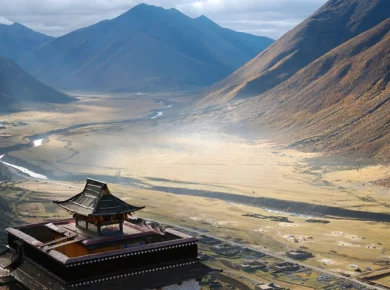Disclaimer: This blog post solely reflects the opinion of the authors and should not be taken to represent the general views of IPPR’s management/ editorial team or those of fellow authors.
Global warming and ‘green colonialism’
As 2020 was declared the warmest year on record by NASA (Figure 1), replacing 2016, the issue of climate change seems more and more pressing. It was caused mainly by the developed countries which accounted for 79% of global carbon emissions from 1850 to 2011 (Figure 2). These emissions were the result of the successive industrial revolutions and of the capitalist system which aimed at constantly increasing the production and consumption of goods and services, thereby fostering the growth of carbon emissions. Nowadays, ironically, the poorest countries are the most vulnerable in the face of the effects of climate disruption. It is not in developed countries, but in Dominica, that the development level was set back by a single hurricane in 2017 (UNDP, 2020). And no developed country is immediately threatened by the rising sea level, whereas the Republic of Kiribati will be sunk in less than five decades (Duhaime-Ross, 2016).
Figure 1. Yearly temperature anomalies from 1880 to 2019, with respect to the 1951-1980 mean, as recorded by NASA, NOAA, the Berkeley Earth research group, and the Met Office Hadley Centre (UK) (Source: NASA) Figure 2. Who caused climate change historically? (Source: Center for Global Development)
Some countries such as the United States of America and the United Kingdom present themselves as leaders in climate action (Gebrial, 2020). However, they are among those who are the most to blame (Figure 2). In addition, communities living close to nature, respecting it and fostering the development of ecosystems are sometimes even prevented from pursuing their traditional activities (Fjellheim and Carl, 2020) . While this was justified through cultural superiority until the end of the 20th century, countries now use the fight against climate change as a reason for pursuing imperialist activities. This has been designated as green colonialism.
Nonetheless, the term ‘green colonialism’, just as ‘colonialism’, has been used to put a name on various phenomena. Daniel Butt defines colonialism as the combination of domination, cultural imposition and exploitation of one people by another (2013). Rearranging this definition, we restrict green colonialism to the domination, the cultural imposition and the exploitation of peoples by other peoples using environmental excuses.
Green colonialism in examples
It can seem difficult to believe that currently, with the existence of international conventions on human rights widely ratified, imperialist behaviours are still present, especially when engaged in by developed countries. Nevertheless, several examples are to be deplored.
Conservation policies
The first example, even if it stems from the colonial period, shows how green colonialism is still unfortunately ongoing.
French scientists studied the African forest cover at the end of the 19th and the beginning of the 20th century. They noticed that most villages were encircled by savanna and forests and concluded that human settlements were destroying the forests. However, it is nowadays known that trees growing in semi-arid environments are a result of human presence through a progressive fertilization of the soils (Blanc, 2021).
After decades of exploitation of the African lands for hunting and farming, the European settlers decided to create national parks in the 1930s. Their importance was further reaffirmed in a 1961 conference at Arusha in Tanzania by the European settlers, and the World Wildlife Fund (WWF) was created. It helped to finance the deployment of conservation experts from developed countries in Africa. The major issue with this is well expressed by Guillaume Blanc: “these experts were mostly reconverted colonial administrators who, throughout the continent, perpetuated the notion that nature had to be emptied of its inhabitants in order to be protected” (2021).
On the contrary, in Europe, conservation policies spread different ideas on how to protect species: the preservation of the environment was considered compatible with human presence. For instance, some natural reserves created in the 1960s in France aimed at preserving traditional farming. This sometimes served to enhance support for the Republic but was much less at the expense of the population than in Africa (Blanc, 2021).
Two big differences between the reserves in Europe and Africa must be highlighted. First, African reserves provoked eviction of communities, such as the ones in Ethiopia. Second, the populations which managed to stay in these nature parks were criminalized. They were fined for cultivating their land or grazing their herds and sentenced to prison for hunting even though it was their traditional way of living and was not hurting the ecosystems. This was aggravated by the militarization of the natural reserves in Africa which also increased the violence towards local populations (Blanc, 2021).
A concrete comparison can help understand where exactly colonialism lies in this situation. On the one hand, UNESCO classified the Cévennes region in France as a World Heritage Site in 2011, for its agropastoralism tradition, thereby stressing the importance of preserving the environment shaped by its inhabitants. On the other hand, the same organisation demanded the eviction of people living in the Simien Park in Ethiopia, demonstrating Western domination, because they were considered a threat to the natural value of the land (Blanc, 2021). Guillaume Blanc draws the following conclusion of this example: “while Europeans shape their environment, Africans are thought to degrade it” (2021), which is a cultural imposition.
Energy production and exploitation
Green colonialism also finds its way in the domain of energy. Indeed, production of renewable energy requires the settlement of facilities on wide territories and can affect the livelihoods of their inhabitants. An eloquent example is the one of the Saamis in Norway.
The indigenous Saami people live across the northern parts of Norway, Sweden and Finland (Price, n.d.). Recently, wind farm projects on Saami land have proven harmful to them. Indeed, the Saamis are reindeer herders and make their semi-domesticated reindeers graze on their territories. However, research has shown that the herds avoid grazing where they can either see or hear wind turbines. It means that the migrations of herds are at risk of disruption, especially regarding the most vulnerable animals such as pregnant mothers and calves (Fjellheim and Carl, 2020).
Nonetheless, several wind farm projects are currently ongoing in Norway on Saami lands, such as the one at Oyfjellet. They are violating human rights as they prevent the Saami people from pursuing their traditional way of life. Lawsuits have been filed to obtain justice but there is not much hope. Indeed, an indigenous community went to court to fight for justice after the building of the Fosen wind power complex for the same reason. Even though the lawsuit was won by the Saamis in 2020, it only demanded monetary compensation from Fosen Vind, the company which led the project (Fjellheim and Carl, 2020).
This shows a failure in the Norwegian system. Indeed, majoritarian systems are widely accepted because they are combined with the respect of human rights. It means that, even if the policies are oriented towards what the majority of citizens want, the basic human rights of each single person are respected. As a result, minority rights are recognised and protected. However, Norway, a signatory of numerous international treaties on human rights (OHCHR, 1996) and supposedly protector of the rights of all citizens as stated in its Constitution (Lovdata, 2020), is failing to accomplish its duties. It is exploiting the Saami people for environmental reasons. In a nutshell, renewable energies may account for 98% of Norway’s consumption, but partly at the expense of its indigenous population (Fjellheim and Carl, 2020).
How to stop green colonialism
I think that green colonialism is a very intertwined problem. To address its harms one must first distinguish its causes:
Cultural imposition is the imposition of a culturally shaped opinion or viewpoint on other stakeholders. Regarding African reserves, it was the result of a Western imposition of a conception of environmental preservation which matched neither the ecosystems, nor the way of life of local peoples.
No consultation has been involved in either of the previously exposed examples. And in the case of the Saami people, if consultations were organised, they were not a discussion about the suitability of the project but a choice between two harmful propositions.
Weak human rights structures are revealed by what the Saami people are going through. Indeed, even though the situation was exposed in courts recently and by a UN special rapporteur on the rights of Indigenous peoples in 2016, no action has yet been taken to stop the wind farm projects which violate the rights of entire communities.
To address these problematic aspects, I believe three main points must be emphasised:
Raising awareness is essential. It must be done not only within developing countries and indigenous communities but also in developed countries to hold the governments accountable for their actions.
Creating real consultation structures is very important as well. Indeed, it would have two positive consequences. The first is to respect the rights and ways of living of the people affected by environmental projects. The second is to make new ideas emerge through the contributions of communities as they often know more about their lands and ecosystems than the bureaucrats leading the projects.
Encouraging local research would also limit the cultural imposition by Western governments. Indeed, the production of knowledge is likely to be biased because of its cultural foundations but also the environment in which it was created. However, more local research projects could bring up solutions taking into account the surrounding natural and cultural environment which are essential to challenge Western theories and limit green colonialism.
Conclusion
Green colonialism, whether exercised consciously or unconsciously, is causing serious harm to indigenous populations as well as populations from the least developed countries. This issue is almost absent from the media, which can be explained by the difficulty the impacted populations have to raise awareness about their situation. It is therefore the most important fight to lead: make sure that their voices are heard so that policymakers listen to them.
References
Blanc, Guillaume (2021). “GREEN COLONIALISM”: THE BACKGROUND BEHIND A WESTERN OUTLOOK ON AFRICAN NATURE”, Ideas for Development [online]. (Last updated 7 January 2021) Available at:







